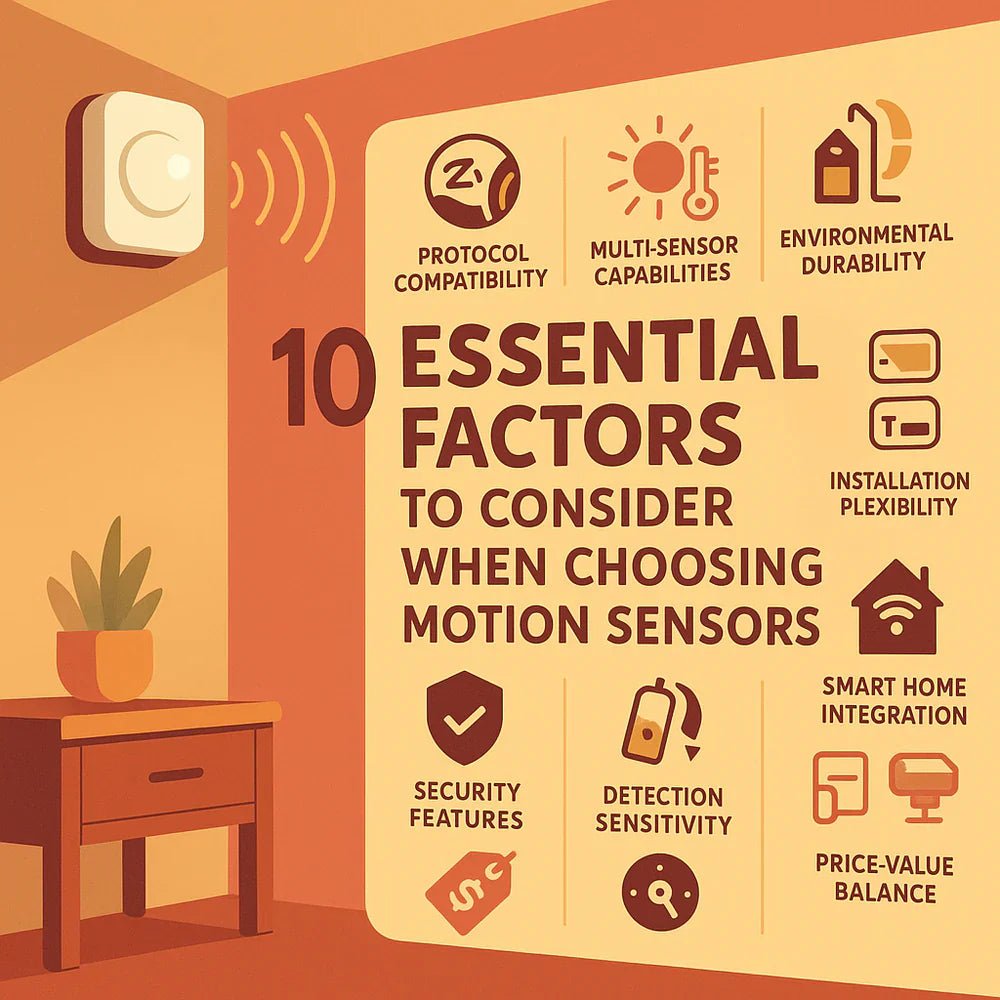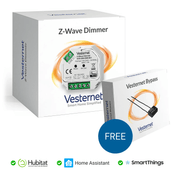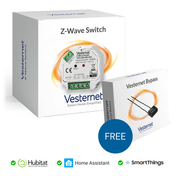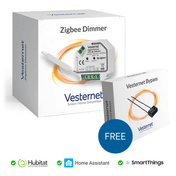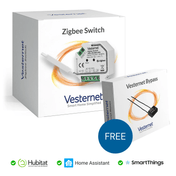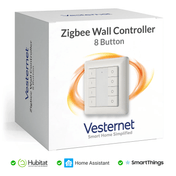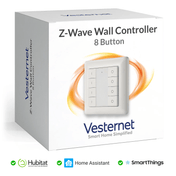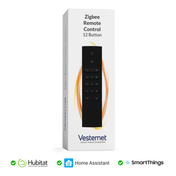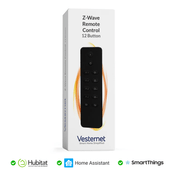Les détecteurs de mouvement sont les gardiens vigilants de votre écosystème domotique. Ils surveillent silencieusement les mouvements et déclenchent des réponses intelligentes qui améliorent la sécurité, le confort et l'efficacité énergétique. Ces appareils polyvalents servent de base à d'innombrables scénarios d'automatisation, du simple contrôle de l'éclairage aux systèmes de sécurité complets. Avec de nombreuses options disponibles pour différents protocoles et fonctionnalités, le choix du bon détecteur de mouvement nécessite une prise en compte rigoureuse de plusieurs facteurs clés.
Dans ce guide, nous explorerons les facteurs essentiels à prendre en compte lors du choix des capteurs de mouvement, vous aidant à prendre des décisions éclairées qui amélioreront la fonctionnalité et la fiabilité de votre maison intelligente.
1. La compatibilité du protocole détermine l'intégration du système
Le protocole sans fil utilisé par votre capteur de mouvement détermine fondamentalement les systèmes de maison intelligente avec lesquels il peut communiquer et l'efficacité avec laquelle il s'intègre à votre réseau existant.
Lors du choix de vos capteurs de mouvement, assurez-vous qu'ils correspondent au protocole de votre centrale domotique existante ou choisissez des capteurs compatibles avec l'écosystème que vous envisagez de créer. Cette compatibilité constitue la base d'une automatisation fiable et d'une communication fluide entre les appareils.
2. Portée de détection et zone de couverture
La portée de détection effective de votre détecteur de mouvement influence directement la qualité de sa surveillance de la zone ciblée et le nombre de capteurs nécessaires pour une couverture complète. Les détecteurs de mouvement offrent généralement une portée de détection comprise entre 4 et 12 mètres, avec des angles de couverture variant de 110 à 170 degrés.
Les capteurs offrant des angles de détection plus larges, comme une couverture à 170 degrés, permettent de surveiller des zones plus vastes avec moins d'appareils, réduisant ainsi les coûts et la complexité. Cependant, tenez compte de la configuration spécifique de votre espace lors de l'évaluation des besoins de couverture. Les espaces ouverts bénéficient de capteurs offrant une portée maximale et des angles larges, tandis que les couloirs ou les petites pièces peuvent nécessiter des modèles de détection plus précis.
L'angle de détection influence également le positionnement des capteurs. Les capteurs montés au plafond offrent souvent une couverture à 360 degrés, tandis que les unités murales offrent généralement une détection directionnelle permettant de cibler précisément des zones ou des points d'entrée spécifiques.
Tenez compte de la disposition de vos pièces et des zones de surveillance prévues lors de la sélection des capteurs afin de garantir une couverture optimale sans angles morts ni chevauchement inutile entre les appareils.
3. Les capacités multi-capteurs améliorent la fonctionnalité
Les capteurs de mouvement modernes intègrent souvent des fonctionnalités supplémentaires, allant au-delà de la simple détection de mouvement, ce qui accroît considérablement leur utilité dans la domotique. La détection de température permet aux capteurs de mouvement de contribuer aux systèmes de climatisation, en ajustant automatiquement le chauffage ou la climatisation en fonction de l'occupation et des conditions ambiantes.
Les capteurs de lumière permettent des scénarios d'automatisation plus sophistiqués, tels que le déclenchement des lumières uniquement lorsqu'un mouvement est détecté dans des conditions d'obscurité, évitant ainsi toute activation inutile pendant les heures de clarté.Cette fonctionnalité s'avère particulièrement utile pour les installations économes en énergie et les zones avec éclairage naturel.
La détection d'effraction offre une sécurité supplémentaire en vous alertant si quelqu'un tente de désactiver ou d'interférer avec le capteur. Cette fonctionnalité transforme les détecteurs de mouvement classiques en dispositifs de sécurité plus complets, adaptés aux systèmes de surveillance professionnels.
Lors de l’évaluation des capacités multi-capteurs, tenez compte de la manière dont ces fonctionnalités supplémentaires s’intègrent à votre écosystème de maison intelligente existant et si elles correspondent à vos objectifs d’automatisation et à vos exigences de sécurité.
4. Autonomie de la batterie et gestion de l'alimentation
L'autonomie de la batterie est l'un des facteurs les plus importants pour la fiabilité et la maintenance des capteurs de mouvement. La plupart des capteurs de mouvement fonctionnent sur batterie, avec une durée de vie allant de 1 à 2 ans pour les appareils standard à 5 ans pour les modèles haut de gamme dotés d'une gestion avancée de l'alimentation.
Le type de pile influence à la fois les performances et le coût de remplacement. Les capteurs utilisant des piles AAA standard offrent des options de remplacement pratiques et incluent souvent les piles lors de l'achat initial. Les piles CR2 offrent une durée de vie plus longue, mais peuvent être moins disponibles et plus coûteuses à remplacer.
Les fonctionnalités de gestion de l'énergie ont un impact significatif sur la durée de vie de la batterie. Les capteurs avec intervalles de rapport configurables vous permettent d'équilibrer réactivité et économie de batterie. Certains modèles avancés incluent des notifications de batterie faible via votre système de maison connectée, vous permettant d'être alerté avant que les capteurs ne cessent de fonctionner.
Tenez compte de l'accessibilité des emplacements des capteurs lors de l'évaluation de l'autonomie de la batterie. Les capteurs installés dans des zones difficiles d'accès bénéficient d'une autonomie plus longue, réduisant ainsi la fréquence de maintenance, tandis que les capteurs facilement accessibles peuvent générer des rapports plus fréquents pour une meilleure réactivité.
5. Durabilité environnementale et conditions de fonctionnement
Les conditions environnementales dans lesquelles vous installerez des détecteurs de mouvement influencent considérablement le choix des modèles offrant des performances fiables à long terme. Les capteurs intérieurs fonctionnent généralement efficacement dans les environnements domestiques standards, mais certaines zones peuvent nécessiter des spécifications de durabilité renforcées.
Les plages de températures de fonctionnement varient selon les capteurs, la plupart des modèles d'intérieur fonctionnant de manière fiable entre -10 °C et 45 °C. Les capteurs installés dans des espaces non chauffés, des garages ou des zones soumises à des variations de température extrêmes nécessitent des modèles offrant une tolérance de température étendue pour garantir un fonctionnement constant.
La résistance à l'humidité est cruciale pour les capteurs installés dans les salles de bains, les cuisines ou autres zones humides. Les modèles avec une tolérance à l'humidité allant jusqu'à 95 % assurent un fonctionnement fiable dans ces environnements difficiles, sans dégradation ni déclenchement intempestif.
Pour les applications extérieures ou les zones exposées à l'humidité, privilégiez les capteurs dotés d'un indice IP approprié, offrant une protection contre les infiltrations d'eau. Certains détecteurs de mouvement spécialement conçus pour une utilisation en extérieur sont dotés de boîtiers résistants aux intempéries et bénéficient d'une protection environnementale renforcée.
6. Flexibilité d'installation et options de montage
Les options d'installation de vos détecteurs de mouvement influencent à la fois leur efficacité et leur intégration esthétique dans votre maison. Les détecteurs muraux offrent un contrôle directionnel précis et un accès facile pour le remplacement des piles, ce qui les rend parfaits pour surveiller des zones ou des points d'entrée spécifiques.
Les capteurs montés au plafond offrent une couverture plus large et, sur certains modèles, une détection à 360 degrés. Les capteurs sphériques sont parfaits pour les installations au plafond, offrant une surveillance discrète avec des modes de détection réglables grâce aux caches de lentille inclus.
Les systèmes de montage magnétique simplifient l'installation et permettent un repositionnement facile sans matériel de montage permanent.Cette flexibilité s'avère précieuse lors de la configuration initiale lors de l'optimisation du placement du capteur pour une efficacité maximale.
Certains capteurs offrent plusieurs options de montage, vous permettant de choisir entre une installation murale ou au plafond selon vos besoins. Tenez compte de l'impact visuel du positionnement du capteur et choisissez des options de montage qui s'harmonisent avec l'esthétique de votre maison tout en offrant une couverture optimale.
7. Potentiel d'intégration et d'automatisation de la maison intelligente
Le degré d'intégration de vos capteurs de mouvement aux plateformes de domotique détermine leur valeur dans les scénarios d'automatisation. Les capteurs prenant en charge plusieurs types de déclenchement (détection de mouvement, annulation de mouvement, alertes anti-sabotage) offrent des possibilités d'automatisation plus sophistiquées qu'une simple détection marche/arrêt.
La compatibilité des plateformes varie considérablement selon les capteurs et les concentrateurs. Bien que la plupart
Des pilotes personnalisés et une prise en charge améliorée de l'intégration permettent d'accéder à des fonctionnalités supplémentaires et de garantir des performances optimales avec la plateforme choisie. Les fabricants proposant des mises à jour régulières des pilotes et des optimisations spécifiques à la plateforme offrent une meilleure valeur et des fonctionnalités supérieures à long terme.
Réfléchissez à la manière dont les capteurs de mouvement s'intégreront à vos appareils et scénarios d'automatisation existants. Les capteurs prenant en charge l'activation de scènes, l'intégration de systèmes de sécurité et la gestion de l'énergie offrent une valeur ajoutée supplémentaire à votre maison connectée.
8. Fonctions de sécurité et protection contre les falsifications
Pour les détecteurs de mouvement qui contribuent à la sécurité de votre domicile, des fonctionnalités de sécurité avancées sont essentielles. La détection d'effraction vous alerte immédiatement si quelqu'un tente de désactiver ou d'interférer avec le capteur, préservant ainsi l'intégrité du système de sécurité même en cas d'attaque.
Les communications chiffrées préviennent les failles de sécurité potentielles en protégeant les signaux sans fil entre les capteurs et votre hub. Ce chiffrement garantit que les données de détection de mouvement ne peuvent être interceptées ou manipulées par des tiers non autorisés.
Certains capteurs intègrent des fonctionnalités de sécurité supplémentaires, comme la détection anti-masquage, qui vous alerte si quelqu'un tente de bloquer la vue du capteur. Ces fonctionnalités avancées transforment les capteurs de mouvement de base en composants de sécurité de qualité professionnelle, adaptés aux systèmes de surveillance complets.
Lors de la sélection de capteurs pour les applications de sécurité, privilégiez les modèles dotés d'une protection anti-falsification robuste et de communications cryptées pour garantir que votre système de sécurité reste efficace et fiable.
9. Sensibilité de détection et personnalisation
La personnalisation de la sensibilité de détection et des zones de couverture vous permet d'optimiser les capteurs de mouvement pour des applications et des environnements spécifiques. La sensibilité réglable évite les faux déclenchements dus aux animaux ou à des facteurs environnementaux, tout en garantissant une détection fiable des mouvements humains.
Les caches d'objectif et les masques de détection vous permettent d'exclure certaines zones de la surveillance, comme les rues passantes visibles à travers les fenêtres ou les zones fréquentées par les animaux. Cette personnalisation réduit les fausses alarmes tout en assurant une surveillance efficace des zones ciblées.
Certains capteurs offrent des modèles ou des zones de détection configurables, vous permettant d'ajuster la couverture pour des performances optimales dans votre environnement spécifique. Ces fonctionnalités avancées s'avèrent particulièrement utiles dans les installations complexes ou les zones aux exigences de détection élevées.
Tenez compte de vos besoins de surveillance spécifiques et des sources potentielles de faux déclenchements lors de l’évaluation des capteurs dotés de capacités de personnalisation.La capacité à affiner les paramètres de détection détermine souvent la différence entre une automatisation efficace et de fausses activations frustrantes.
10. Prix et valeur à long terme
Les capteurs de mouvement vont des modèles d'entrée de gamme économiques aux options haut de gamme avec fonctionnalités avancées et garanties étendues. Les capteurs de base coûtent généralement entre 25 et 35 £ et offrent une détection de mouvement fiable avec une autonomie standard et des fonctionnalités d'intégration de base.
Les capteurs milieu de gamme (35-45 £) offrent souvent des fonctionnalités de détection supplémentaires, comme la surveillance de la température, une autonomie accrue et des fonctionnalités d'intégration optimisées. Ces capteurs offrent un excellent rapport qualité-prix pour la plupart des applications de domotique.
Les capteurs haut de gamme (45 à 65 £) offrent la plus grande autonomie, les fonctionnalités les plus avancées et une compatibilité complète avec les plateformes. Ces modèles incluent souvent des fonctionnalités de sécurité de niveau professionnel et de nombreuses options de personnalisation.
Lors de l'évaluation de la valeur d'un capteur, tenez compte du coût total de possession, incluant la fréquence de remplacement de la batterie, les besoins potentiels en concentrateur et l'assistance à long terme. Les capteurs dotés d'une batterie plus longue et d'une assistance continue du fabricant offrent souvent un meilleur rapport qualité-prix à long terme, malgré des coûts initiaux plus élevés.
Capteurs de mouvement recommandés pour différents besoins
Sur la base des facteurs ci-dessus, voici nos recommandations pour différentes exigences des utilisateurs :
Pour les utilisateurs soucieux de leur budget : Le
Pour les capacités multi-capteurs : Le
Pour les fonctionnalités Premium : Le
Pour les applications extérieures : Le
Pour la configuration avancée : Le
Pour l'automatisation de base : Le

